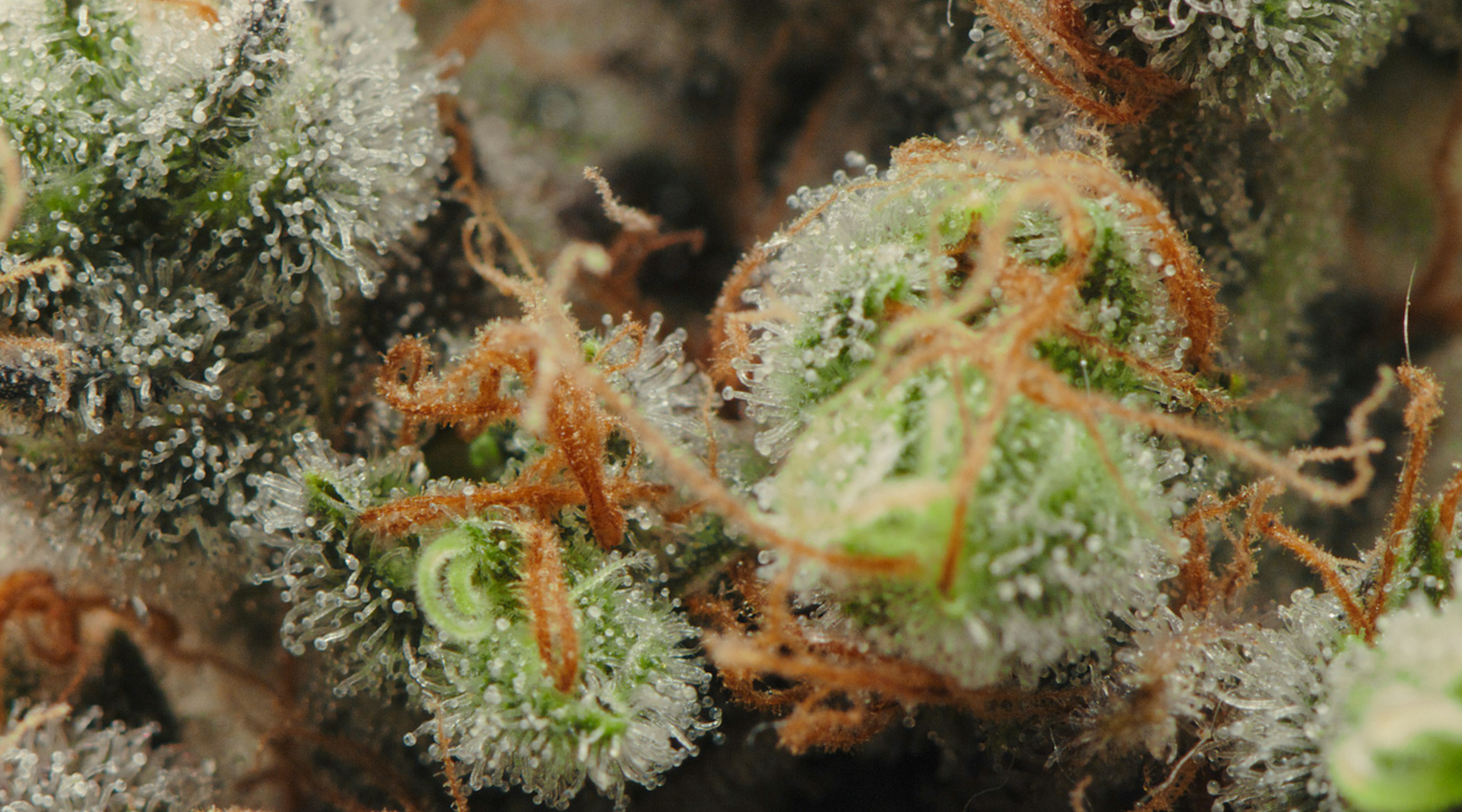What is caryophyllene?
Caryophyllene, also known as beta-caryophyllene (BCP), is a terpene that is abundantly produced across the plant kingdom. It is found in many plants not part of the cannabis family tree - rosemary, black pepper, cinnamon, cloves, hops, and basil, amongst others.
Like all terpenes, caryophyllene has its own unique scent profile, which leans towards the spicy end of the spectrum. It is often associated with freshly ground black pepper or cinnamon's sweet spiciness.
Why is caryophyllene unique?
It is currently believed that caryophyllene is the only terpene that directly interacts with and binds to one of the body's cannabinoid receptors (CB2). Cannabinoids like THC and CBD also bind to these receptors. Caryophyllene can thus be considered a ‘cannabinoid’, as it demonstrates activity when bound to the CB2 receptor.
Most of the terpenes produced by cannabis plants offer a range of health benefits, but it's thought that only caryophyllene has the ability to bind directly with receptors in the endocannabinoid system (ECS). This one difference makes caryophyllene stand out among its terpene peers and adds to the therapeutic potential of this special chemical.
Caryophyllene is also the first approved dietary terpene. It is classified as a Generally Recognised As Safe (GRAS) compound and has been used as a food additive for decades.
How does caryophyllene interact with the endocannabinoid system?
Caryophyllene is able to bind to and activate CB2 receptors in the ECS, which are primarily found in immune cells. The CB2 receptors live on the cell walls and trigger a range of anti-inflammatory and immune-boosting effects when they are “switched on”.
As caryophyllene can bind to these receptors, it has the potential to help regulate the body's immune response and reduce inflammation. This makes it a promising compound for managing many health concerns and conditions.
Which cannabis strains are rich in caryophyllene?
Caryophyllene is one of the terpenes produced in the highest concentrations across many cannabis strains. UK medical cannabis examples include:
- Releaf Tangerine Boost
- Therismos Access T22 OG Kush
- ECS Lite C16 Maluti CBD
- Montu Upstate T800 Pineapple Express Vape Cartridge.
What are the therapeutic benefits of caryophyllene?
Since caryophyllene is able to target the CB2 receptor directly, it has a range of potential therapeutic benefits -
- Anti-inflammatory properties, helping with conditions such as arthritis and autoimmune disorders
- Antioxidant effect, protecting cells from damage and oxidative stress
- Anxiety and depression relief, as the activation of the CB2 receptors have been linked to mood regulation
- Pain management, by reducing inflammation and potentially interacting with the body's pain response pathway.
It is important, at this stage, to explain the 'entourage effect'.
The entourage effect and caryophyllene
The 'entourage effect' is a widely accepted theory stating that when cannabis compounds (cannabinoids, terpenes, etc.) are taken together, the resulting effects are stronger and more diverse than when they are taken separately.
This essentially means that when a patient takes a cannabis-based medication that includes both cannabinoids and terpenes, that patient may experience greater symptom relief or therapeutic benefits than if the medication contained only one of these compounds.
Caryophyllene's ability to interact with the CB2 receptor may enhance and amplify the effects of other cannabinoids in cannabis, especially when it comes to managing pain and inflammation.
Are there any side effects related to taking caryophyllene?
Unlike most therapeutic options, terpenes generally come with no side effects, and that includes caryophyllene. It has been shown to be well tolerated in high doses in both animals and humans, and there have been no reports of adverse reactions.
But a word of caution regarding caryophyllene supplements -
It's important to note that the best way to experience the therapeutic benefits of caryophyllene is through whole-plant medicine. Many 'full-spectrum' and 'broad-spectrum' medical cannabis products offer patients access to both terpenes and cannabinoids in one medication.
To get the best advice and guidance, it's important to always consult with a medical professional before starting any new treatment or medication. In the UK, medical cannabis can only be prescribed by a specialist doctor for specific conditions.
Will taking caryophyllene make you feel 'high'?
No, when taken by itself, caryophyllene will not cause any intoxicating effects.
The psychoactive effect of cannabis is caused by THC binding with the CB1 receptor.
Caryophyllene only binds to the CB2 receptor, so it will not cause intoxication or mind-altering effects.
In fact, caryophyllene has been found to counteract some of the lesser desirable effects of THC, such as anxiety and paranoia. It has been shown to block the CB1 receptor, preventing THC from binding and reducing the psychoactive effects. This is one of the reasons caryophyllene is often recommended as a complementary terpene to balance out THC-heavy strains.
How is caryophyllene used in other products?
Terpenes are integral to essential oils and have been used in traditional medicine and aromatherapy for centuries. But caryophyllene, in particular, has shown promise beyond the cannabis industry.
You will see caryophyllene added as a natural flavouring agent in food products, including spices, sauces, and beverages. It is also used in cosmetics and personal care products for its anti-inflammatory and antioxidant properties. Outside of its potential therapeutic benefits, caryophyllene's spicy and woody aroma also makes it a popular choice in perfumery.
What does caryophyllene taste like in cannabis strains?
Patients have described caryophyllene as exhibiting a spicy, tangy, woody flavour with a slightly sweet taste.
FAQs
How do caryophyllene's effects differ when inhaled versus ingested?
When we eat a food product containing caryophyllene, it has to work its way through the digestive tract. This means that at least some of the compound will be broken down by digestive enzymes before it reaches the bloodstream, not only reducing its effectiveness but also slowing down the onset of effects.
Inhaled caryophyllene bypasses the digestive system, reaching the bloodstream quickly and in higher concentrations. This means that when inhaled, the effects of caryophyllene may be felt more immediately and intensely than when ingested.
Can caryophyllene have psychoactive effects or influence the high from cannabis?
Caryophyllene does not cause intoxication itself, and it may actually reduce the psychoactive effects of THC.
Concluding thoughts
Being the only terpene capable of interacting directly with the endocannabinoid system, caryophyllene is one of the most interesting and promising compounds in medical cannabis. Its potential benefits for pain relief, mood regulation, and cell protection make it a valuable addition to any medical cannabis treatment plan.
If you want to learn more about cannabis-based therapy options, check out our huge education section.
Close to every single medical cannabis topic is covered, with all pieces citing up-to-date, evidence-based research. Keep learning and keep exploring the world of UK medical cannabis with Releaf.






